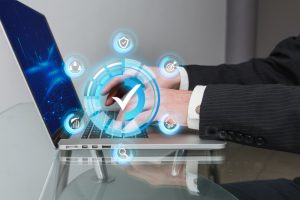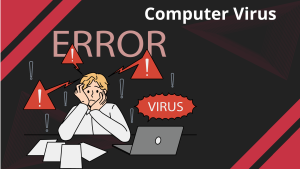Phones, laptops, and computers run the world of work. They empower businesses to do more, faster, and they enable employees to access the data they need on-the-go. But with a rise in mobile devices comes an increase in risk — something that Mobile Device Management can mitigate. This article will explain the practice, how it works, and its many applications to know.
Mobile Device Management, or MDM for short, is a term used to refer to the administration and use of mobile devices within a workforce. It addresses how items like phones, laptops, and tablets are controlled by administrators, often involving layers of monitoring, automation, and security protocols.
MDM is usually implemented with cloud service, either in the form of a software-as-a-service (SaaS) or an on-premises solution. The main goal of MDM is to ensure that the devices are configured correctly and running the most up-to-date software for security and performance.
A Look at the Different Features and Functions of MDM
Mobile Device Management is widely adopted by businesses of all industries and sizes. Not all of them adopt it for the same reason, though. There are a number of purposes that MDM can serve, including:
Security and Compliance
One of the most important roles that MDM plays is in protecting mobile devices from threats such as malware, viruses, and data breaches. All common staples of the cyber landscape, these threats can have severe implications on businesses both in terms of data security and regulatory compliance. Through protections such as two-factor authentication, data encryption, MDM helps to keep data secure no matter where it is stored or accessed.
This additional layer of protection is also incredibly valuable to organizations when it comes to complying with major privacy laws. Regulations such as GDPR, HIPAA, and PCI-DSS all mandate certain security measures and protocols, which MDM can help to enforce.
BYOD (Bring Your Own Device)
BOYD, or Bring Your Own Device, is a common workplace policy that allows employees to use their own phones and laptops for business purposes. While convenient for staff, it raises reasonable concerns regarding the privacy and security of these devices. MDM helps to bridge that gap, allowing businesses to set parameters for device usage while also providing options for employees to remain in control of their personal data.
App Management
Organizations rely on many software and apps to keep their operations running smoothly. But ensuring those tools are managed properly can present a challenge, especially for businesses with large teams of staff. MDM programs provide administrators with oversight into what apps are installed on which company devices, the ability to limit downloads, run important updates, enforce usage policies, and more.
Device Provisioning & Enrollment
MDM solutions are often used to simplify and speed up the onboarding process for new devices. This includes setting up parameters for device use and managing user access, something that is especially important in the case of BYOD policies. For companies launching a fleet of new devices, MDM can help streamline enrollment, ensuring every single one of a company’s digital assets is protected and ready for long-term business use.
Remote Management
MDM has become an important practice for many businesses, as trends like remote work make off-premise computer use more common among employees. The system is also valuable for organizations that need a way to keep tabs on who is accessing what on their devices, and when.
While capabilities vary from system to system, most MDM solutions can do things like wipe a device from afar, lock it remotely, or even grant temporary access to certain apps or services. This is beneficial for a number of reasons, the first being convenience. With MDM, employers no longer need to rely on employees to bring devices in for manual configurations or changes. The second is agility; while theft and misuse can be a major concern for companies that lend out expensive technology to staff, remote management gives them the ability to react quickly and take decisive action in such cases.
Performance Monitoring & Reporting
No employee likes having their supervisor peering over their shoulder. And no supervisor wants to do that. But at the same time, there is a need for some form of device usage monitoring. With MDM, administrators can access real-time reports on how devices are being used, as well as flags for any potential anomalies or suspicious activity.
With a world full of smartphones and other mobile devices, employers need to know that it’s not a matter of ‘if’ their organization will need Mobile Device Management, but ‘when’. Taking advantage of this technology can prove invaluable for businesses of all levels, providing them with the insight and control they need to manage expensive investments in the best way possible.

